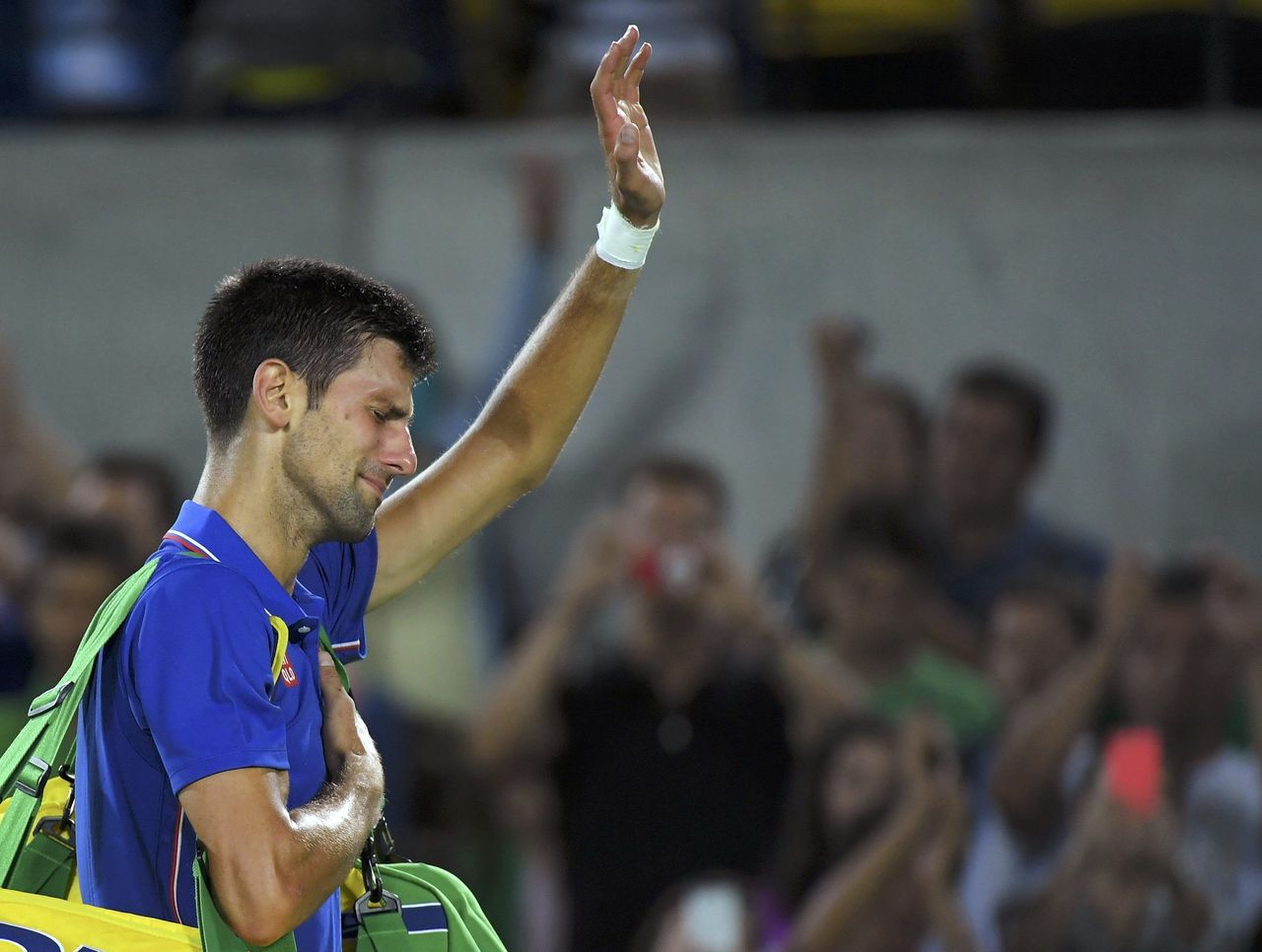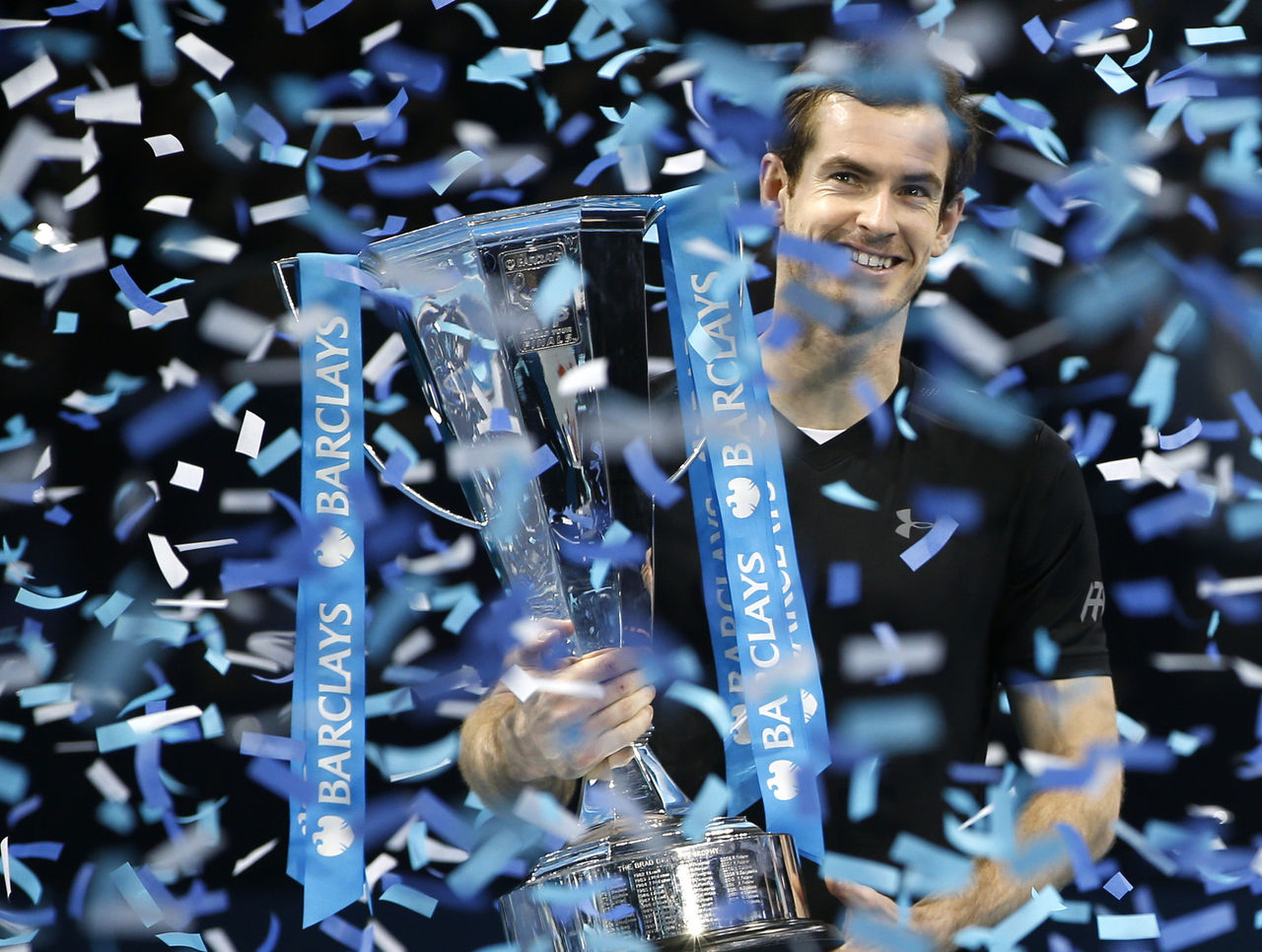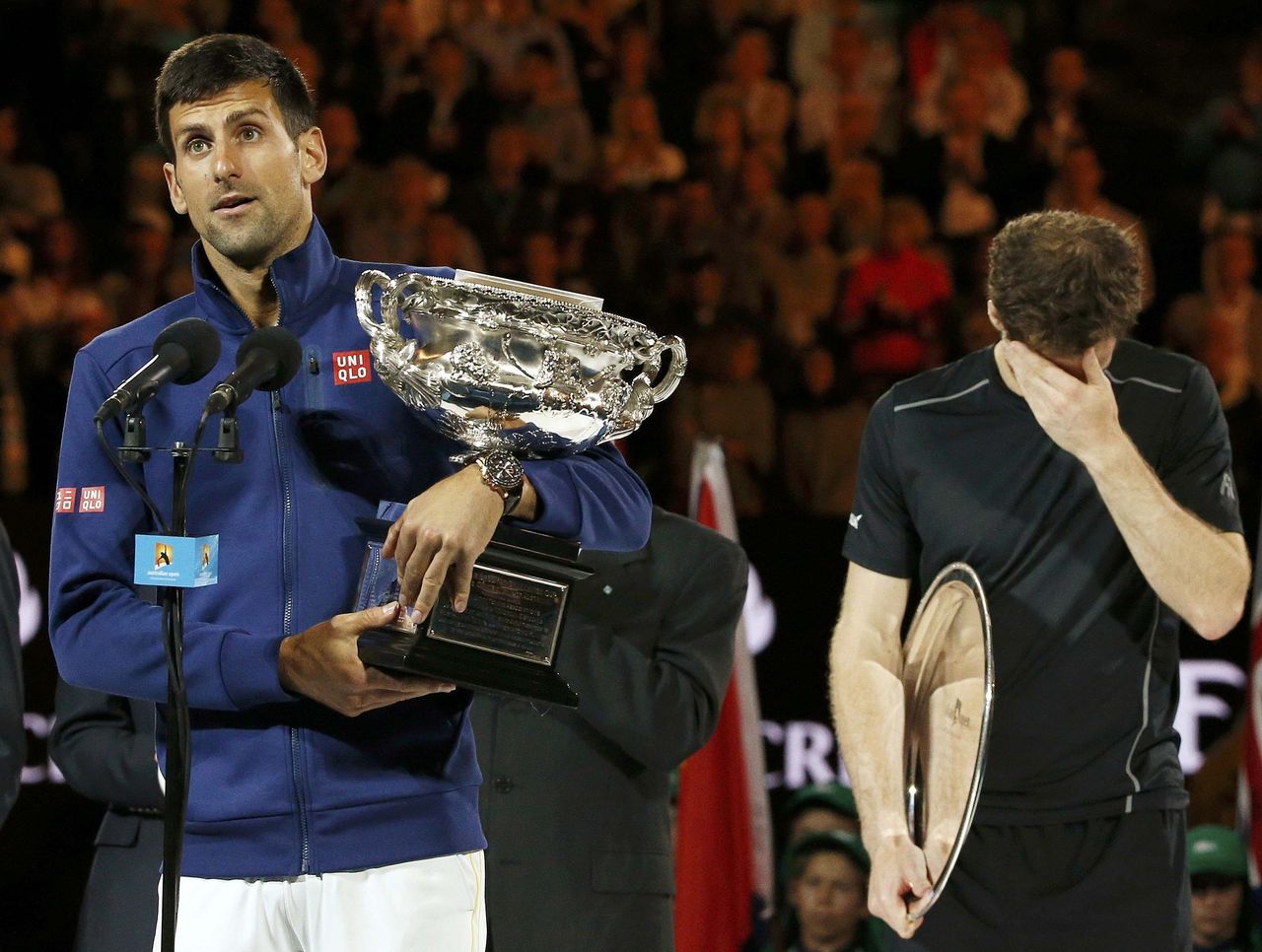Djokovic-Murray rivalry will define the 2017 season, for better or worse
In a way, the 2016 men's tennis season was shaped as much by absence as presence, and in that way it offered a glimpse of the not-too-distant future of the sport. Which is to say, the sport devoid of Roger Federer and Rafael Nadal.
With both those institutional stalwarts sitting out large portions of last year due to injuries - Federer's absence being particularly glaring, since he previously hadn't missed a major tournament since the 20th century - it was left to others to bear the standard. And while enigmatic showmen like Gael Monfils and Nick Kyrgios kept things interesting, and Juan Martin del Potro made a heart-swelling comeback, and former Next Generation dignitaries Milos Raonic and Marin Cilic notched signature wins, and Stan Wawrinka did his once-a-year Grand Slam out-of-body thing, the season was ultimately defined by Novak Djokovic and Andy Murray.
What was interesting - and, frankly, disappointing - was that it was rarely defined by both men at the same time. Though they won nearly every meaningful tournament between them (three of the four majors, seven of the nine Masters 1000s), the season was a tale of two halves, with shockingly little overlap.
Djokovic dominated the first half so thoroughly that a calendar Slam seemed not only possible but probable. For the four weeks between his long-overdue first French Open title and his third-round flameout at Wimbledon, he held all four majors at once. He won 42 of his first 44 completed matches to start 2016, and showed no signs of slowing down. Then, out of nowhere, he fell off a cliff, succumbing to some combination of injury and psychological turmoil, winning just one title the rest of the way, while routinely getting dispatched in the early rounds of tournaments.

But as soon as Djokovic let it drop, Murray was there to take up the baton, and he lapped the field in the second half with a sprint no less impressive than Djokovic's in the first half. Murray made the finals of nine of the last 10 tournaments he played, and won eight of them - including Wimbledon, the Olympics, and the World Tour Finals. He finished the year on a 25-match winning streak, closing what had been a canyon-sized gulf in running down and surpassing Djokovic in the rankings.
Dead on a rival
If there was one thing Murray's second half lacked, though, it was a worthy adversary. Those nine finals matches came against eight different opponents, and after Djokovic got the better of him in the Australian and French Open finals, Murray had to wait until the last match of the year to exact his revenge. During his dominant stretch between the French Open and World Tour Finals, he had to beat just two top-10 players.
That his rise coincided with Djokovic's dip made Murray's improbable ascent to world No. 1 feel more anticlimactic than it should have - not because he didn't earn or deserve it, but because it was always sort of assumed that if he was ever to get there, he'd have to go through one or more of his longtime nemeses, instead of second-tier hopefuls like Raonic and Cilic and Jo-Wilfried Tsonga and Roberto Bautista Agut.
That's unfair to Murray, of course. After having the way blocked for over a decade by perhaps the three greatest players in history, after years of being treated like the runt of the Big Four litter, of falling victim to circumstance and bad timing, he deserved to have a few breaks go his way. (His Wimbledon win over Raonic came in his 11th Slam final, and the first one in which he'd faced neither Djokovic nor Federer.) The lack of drama shouldn't diminish Murray's achievements. But neither did Murray's achievements preclude one pining for more drama.

The season did end in ostensibly dramatic fashion: with the world's top two players - who'd taken turns demolishing the rest of the tour in 2016 - meeting in the WTF final, with world No. 1 on the line - the first time the year-end top ranking had ever been up for grabs in the last match of a season. Still, the on-court product didn't quite live up to the stakes.
To Murray's immense credit, though, he took care of business, dusting a sloppy Djokovic in two straightforward and decidedly ugly sets. His interminable climb could've seen him cast down from the summit after just two weeks; instead, he got to stay there until 2017. He spent virtually his entire 20s watching his contemporaries hoard accolades and trophies that might well have belonged to him if he'd been born a decade earlier, and now, at last, he's having his moment.
Related: Murray accepted he may never win a Grand Slam after 2012 loss
Building a better duopoly
Djokovic should have plenty to say about how long that moment lasts. He's still a long way from recapturing his peak form, and he may never again reach the heights he did in 2015 and the first few months of 2016. But beating Murray to defend his Qatar Open title at the first tournament of the year - shaky as he looked in the early rounds - was a good start. Their dance is far from over, and even with Federer and Nadal back in the fold, Wawrinka and Raonic lurking, and the younger generation slowly encroaching, it will again be the Big Two that defines the coming season.
The hope is that they'll be able to put their best feet forward in lockstep this time; that their competitive, entertaining, see-sawing final in Doha last week was a sign of things to come. The Djokovic-Murray rivalry has always been a bit wanting, whether because it's largely been one-way traffic, or lacks a certain aesthetic verve, or has produced a relative paucity of memorable matches. For as good as they've both been, seeing them play their best tennis at the same time has been a frustratingly rare sight.
Their 2017 tug of war will begin in earnest in Australia, where it's as likely as not that they'll meet in the final for the fourth straight year and fifth time overall. If Murray wants to make a statement, and prove definitively that he's the world's top player in more than just title, he could start by finally winning the tournament at which he's become the most prolific runner-up of all time. Djokovic can similarly put to rest premature talk of his decline by reaffirming his historic dominance at the year's first Slam.

Last year at this time, Murray's mind was elsewhere - on his pregnant wife and stricken father-in-law - and he seemed surprised to even find himself playing in the final. He didn't let himself down with his effort, but you could see his straight-sets loss coming from a continent away. Without those distractions this year, a rematch with Djokovic would be closer to a fair fight. It would also help set the tone for a season that can inflate their rivalry into something legendary, provided they do that elusive thing where they consistently bring out the best in each other.
Champions are remembered not just for what they won but for who they beat, and how. Djokovic and Murray are already central contributors to each other's individual legacies, but this could be the season they establish a joint legacy that elevates them both, the way it's done in the past for Federer and Nadal, and Pete Sampras and Andre Agassi, and Bjorn Borg and John McEnroe.
The tour now indisputably belongs to Djokovic and Murray. It's up to both of them to make it count.
HEADLINES
- Djokovic cuts ties with players' group he co-founded due to concerns over transparency, governance
- 26 stories we're most excited about for 2026 (Part 1)
- Kyrgios beats Sabalenka in latest 'Battle of the Sexes'
- World No. 10 Draper not ready to return for Australian Open
- 3-time major winner Wawrinka announces 2026 as final year on tour